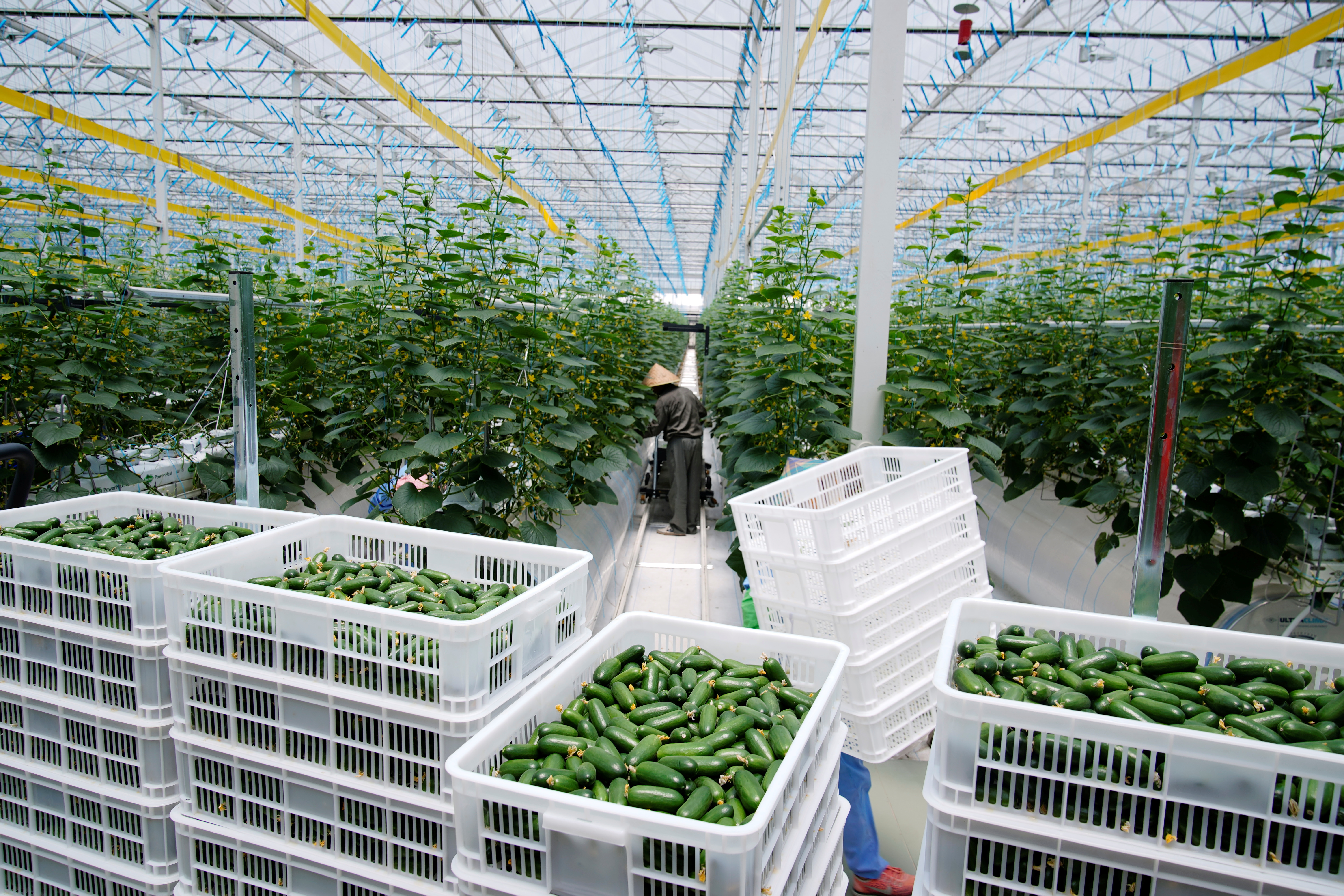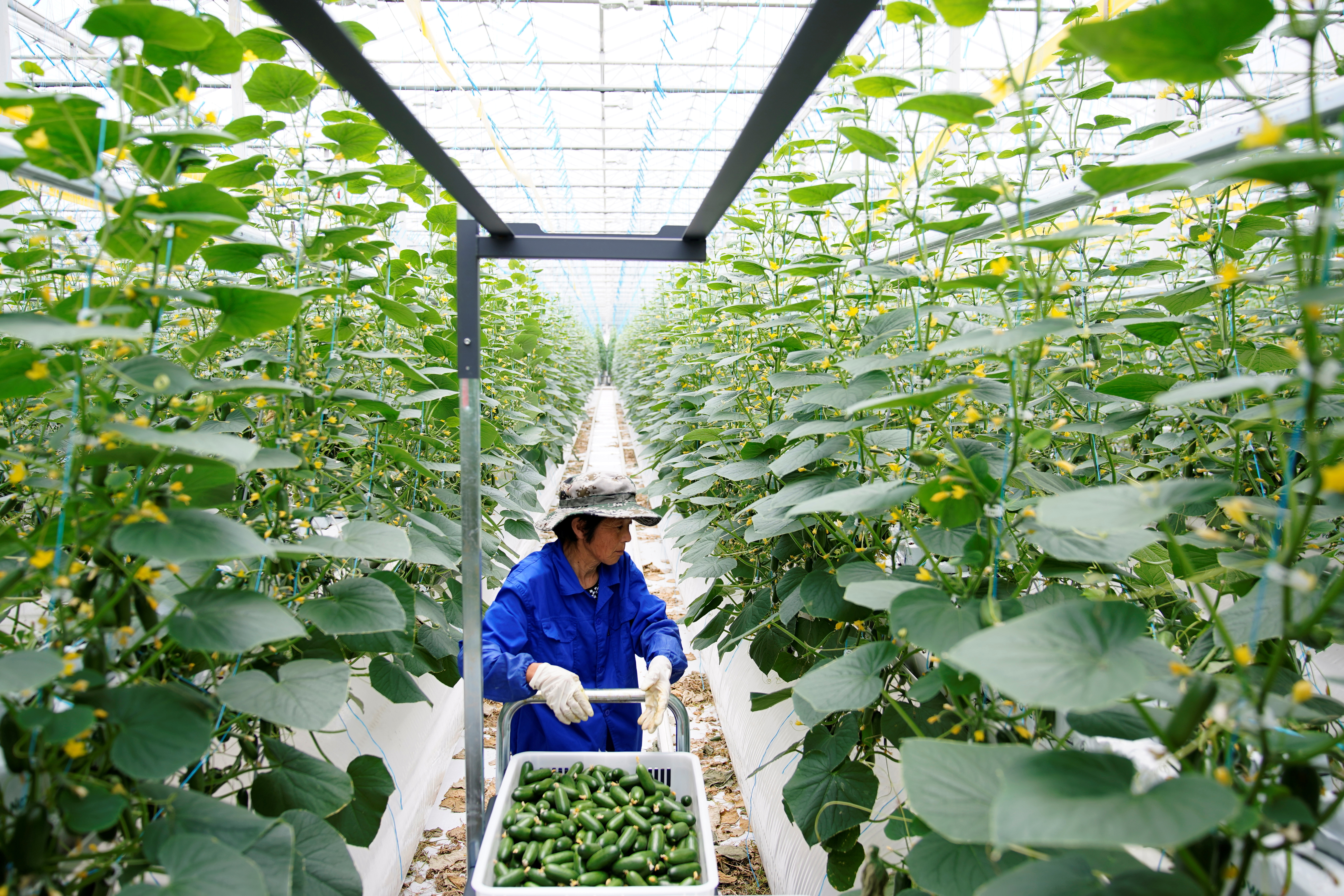At Chongming Island just outside Shanghai, China’s most populous city, at a new commercial glass greenhouse harvested their first batch of produce at the site in May.
The facility is one of dozens sprouting up on the outskirts of China’s megacities that utilise high-end technology to manage irrigation, temperature and lighting systems to grow vegetables within easy reach of a large and affluent consumer base.
By far the world’s largest vegetable producer, China has used greenhouses for decades, but food supply disruptions sparked by coronavirus lockdowns in 2020 have accelerated the development of high-tech glass greenhouse facilities.

The epidemic has led to an acceleration in trend for that produce to be produced near where it’s consumed. Previously, vegetables were often transported for thousands of kilometres within China.
To avoid future disruptions, municipal governments now aim to build up reserves of critical staples, and develop distribution and logistics facilities.
A growing affluent middle class, willing to pay more for higher quality food produced with less pesticides, is also fueling the trend.
The area used for glass greenhouses grew 28% in 2020, well above the 5.9% rise seen in 2019, and faster than the 6% growth seen last year in areas housing cheaper plastic greenhouses.
Historically, China’s vegetable production was concentrated in certain areas and required complex cold chain logistics networks for food to reach major cities’ wholesale markets.

The vulnerability of that hub-centric system became apparent in 2020. COVID-19 outbreaks at a seafood market in Wuhan and at a major fresh market in Beijing caused disruption in the flow of goods to consumers. The pandemic pushed the fresh food industry to reduce the number of intermediaries in its supply chain network.
Greenhouse-grown produce is usually sold directly to e-commerce platforms and supermarkets, bypassing the many middlemen and wholesale markets that are a traditional feature of China’s vegetable supply chain.
FoodVentures’ greenhouse outside Shanghai is a typical example. At over three football fields long and two storeys high, one of the facility’s units nurtures uniform rows of cherry tomato plants that snake up towards the ceiling. It is capable of producing up to 120 tonnes a month of cherry tomatoes.
“Being healthy is already a first protection against any virus, so people care even more about what they eat,” said Aleven. “Secondly, … we want to get rid of the long logistics because we are not sure if it always works and that’s what we’ve seen during this pandemic.”
“Localising it as much as possible is the only answer,” he added.
Further growth in key cities is likely, with a recent government document showing Beijing aims to more than double its “high-efficiency facility agriculture land” to over 300 hectares by 2025.
That growth could further cement China’s status as top vegetable producer. The country already accounts for 75% or more of global output of cucumbers, green beans, spinach and asparagus.

The above is an edited version of an article from Reuters, 04.06.2021
Source: Dongsheng News, No. 54 | 12.06.2021